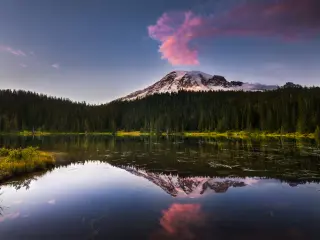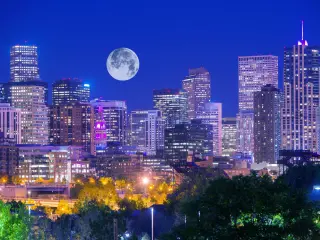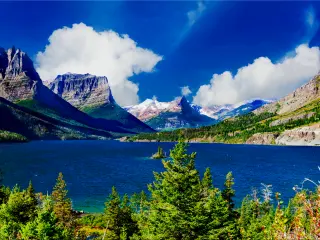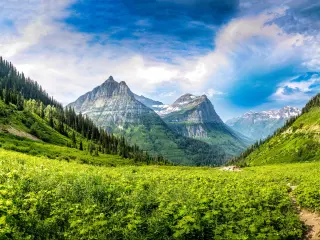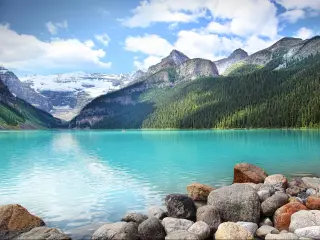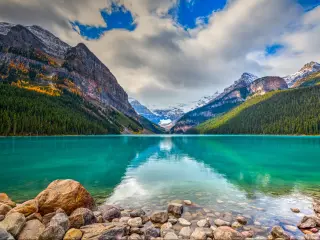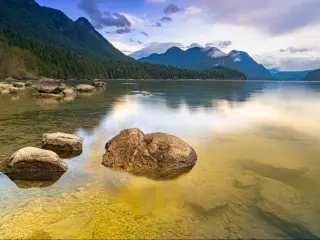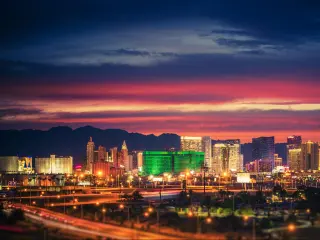Is Going-To-The-Sun Road Scary?
The Going-to-the-Sun Road takes you on a thrilling and immersive drive through Glacier National Park. As you head through the mountains of Montana, the views are incredible and make the drive an unforgettable experience.
The Going-to-the-Sun Road covers 50 miles and will take 1 hour and 50 minutes. The impressive mountain wilderness and Logan Pass are highlights of the route, but there are steep drop-offs and hairpin bends, which may seem dangerous for some drivers.
Throughout the drive, you'll see breathtaking beauty and incredible landscapes, as you pass alpine meadows, crystal-clear lakes, and glaciers, formed over thousands of years. Continue reading to discover the best ways to make the journey as safe as possible and the best things to see along the way.
Where is the Going-to-the-Sun Road located, and why might this drive be challenging?
The Going-to-the-Sun Road, known also as The Sun Road, is situated in the northeast of the US state of Montana. The route begins close to the Canadian border in the village of Saint Mary, on the western edge of the Blackfeet Indian Reservation.
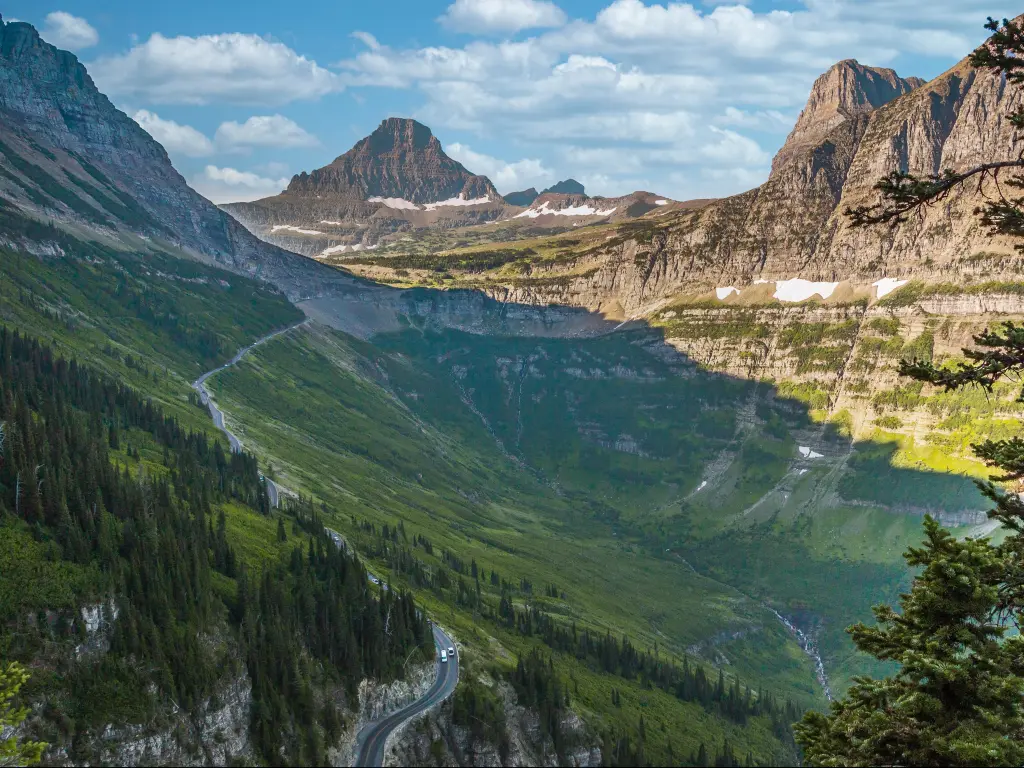
The route takes you through the incredible Glacier National Park with its spectacular mountain scenery and ends at the small town of West Glacier. It is an enthralling driving experience, but it is essential to be aware of the challenges that can arise along the way.
The weather can make the route extremely challenging as it can change so quickly when driving around the mountains. Rain, snow, ice, and fog can all significantly reduce visibility and potentially make conditions unsafe.
However, if the weather is too extreme, the authorities close sections of the road to ensure everyone's safety. To keep abreast of the latest conditions you can text GNPROADS to 333111 for live updates.
Some of the road sections are quite narrow, and there are also tunnels along the route. Certain stretches of the route do also have vehicle height and width restrictions in place, such as near the Avalanche Campground, where vehicles over 21 feet in length and wider than 8 feet are prohibited.
Parts of the Going-to-the-Sun Road are very windy and twisty and involve serious hairpins. The Loop is the most dramatic and when driving in such conditions, it is important to keep your speed low, and obey the limits, even if they do seem low - some sections are 15mph.
Going-to-the-Sun Road is extremely popular during the summer months, and it's not uncommon to find many visitors hiking or cycling on the road. At peak times, the traffic will be slow-moving, making the drive much more laid back and allowing more time to take in the surroundings, and also identify any cyclists and pedestrians.
Parts of the route flow around the foot of the mountains but as the road gains altitude, some drop-offs may prove unerring to nervous drivers. In particular, after ‘The Loop' heading towards Bishops Gap, there are some exposed and quite steep drops that can make the drive uncomfortable.
While driving on the mountain edge can be an attraction for many drivers, if you wish to limit the exposure, driving the route from Saint Mary to West Glacier means you'll be on the inside lane for the scariest part of the journey.
Driving the Going-to-the-Sun Road from St Mary to West Glacier
Driving the route from east to west, the route begins in Saint Mary, on the eastern edge of the Glacier National Park. You'll soon pass the Saint Mary Visitor Centre before the road veers left along the shores of Saint Mary Lake.
Stopping off at the picturesque setting of Rising Sun gives you the chance to take in the stunning views over the lake and the mountains that sit on either side.
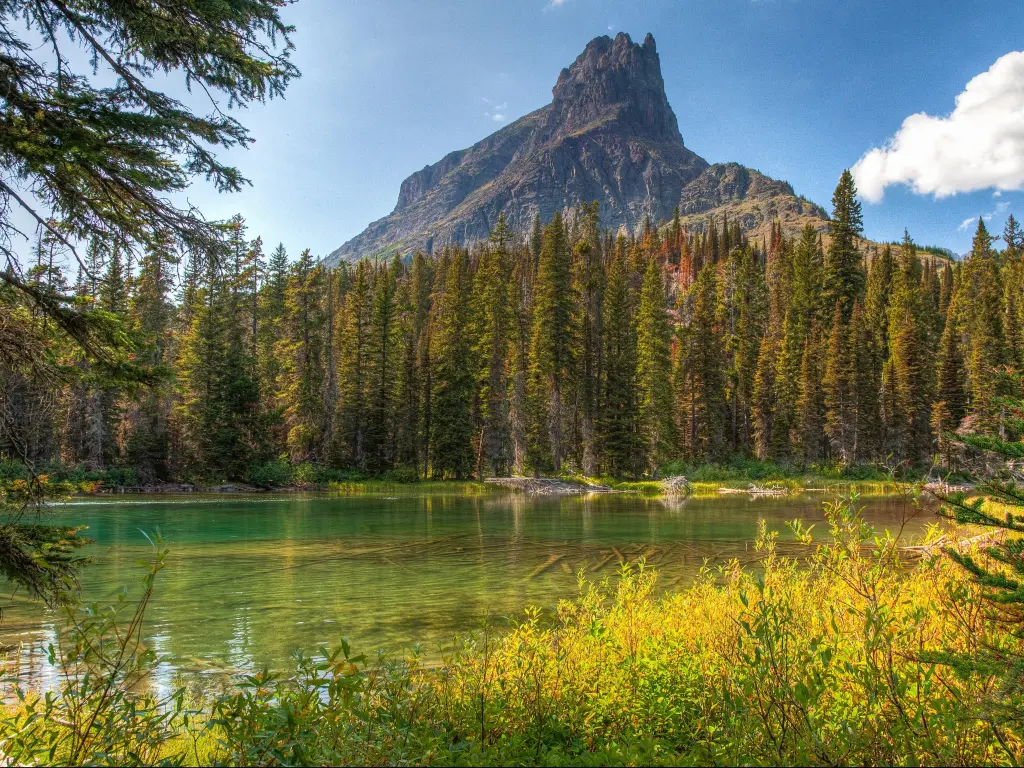
As you continue onwards, you'll pass Going-to-the-Sun Mountain and the road becomes windier as it ascends to the Highline Trail Trailhead and Logan Pass. This is the highest point on the route at 6,646 feet and offers breathtaking views of the surrounding peaks and glaciers.
From here the route winds its way past Bishops Cap and Weeping Wall where the water cascades down the side of the mountain before you head past Haystack Butte towards The Loop.
The Loop is the sharpest bend on the route as the road hugs the curve of the mountain above a sheer cliff face. There is parking available and it is recommended you stop here and soak in the sweeping vistas and take advantage of this incredible photo opportunity.
From here, the route heads down to Logan Creek and then runs parallel to the river past Red Rock Point until you reach Lake McDonald.
The final stage of the journey sees the road follow the shoreline of the Lake passing Sprague Creek Campground and the Lake McDonald viewpoint before arriving in Apgar and then turning left towards West Glacier, the endpoint of the route.
Things to know that can impact the drive on the Going-to-the-Sun Road
The Going-to-the-Sun Road is only one lane in each direction, and there are double yellow lines in the middle of the road to prohibit overtaking.
There may be some drivers who choose to ignore the restrictions, but there are plenty of pullovers and parking spaces along the route to allow other drivers to pass safely. The speed limit is mostly 25mph, but it can drop to 15mph on some of the more severe corners.
There are many visitor centers and restrooms along the route, and The Apgar Nature Center and Logan Pass have such facilities. There are, however, no gas stations within the National Park, so it is important to fill up before setting off.
You can do so at either end of the route with gas stations at Saint Mary's and West Glacier.
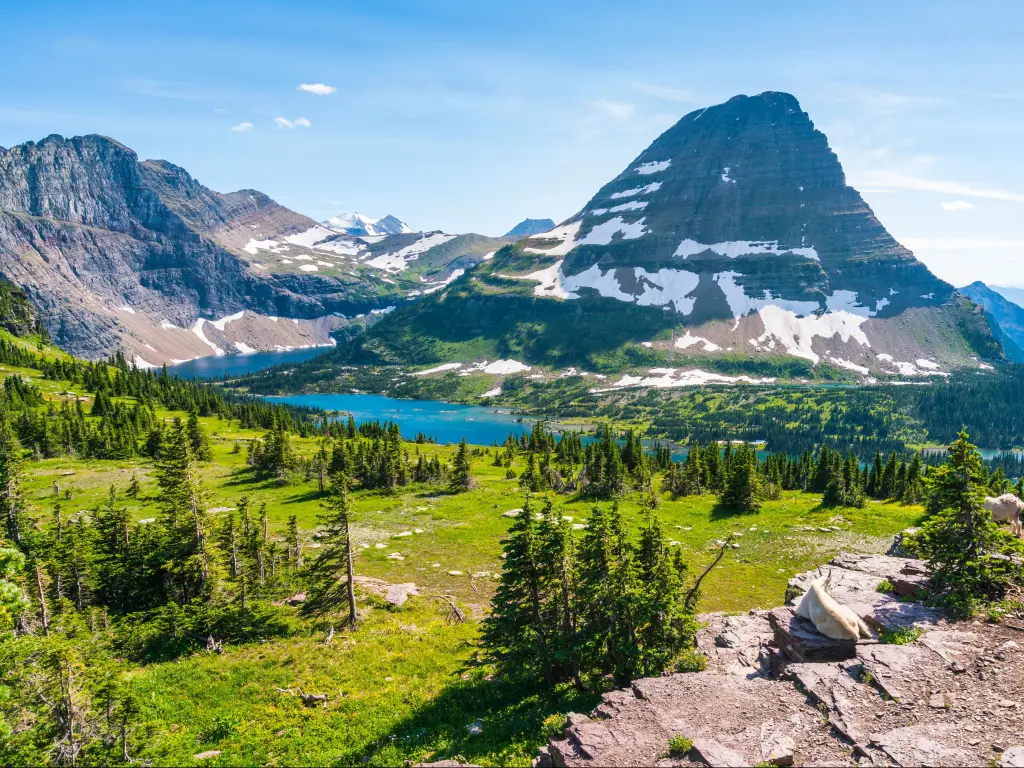
There is likely to be little or no cell phone coverage once you enter Glacier National Park. Making calls and going online is unlikely to be possible so make sure you plan ahead and don't rely on your phone for navigation purposes.
Tips to drive on the Going-to-the-Sun Road in the safest way
Driving the Going-to-the-Sun Road is a fantastic experience, but with all routes that involve mountainous terrain, taking a few precautions will ensure the journey is safe and truly memorable. Here are a few of our top tips to ensure you get the most out of it:
- Making the trip early in the morning and traveling on weekdays are the best times to drive the route if you wish to avoid the crowds.
- If you're nervous, making the drive from Saint Mary to West Glacier is the safer option. This way you'll be near the rock wall as opposed to the edge of the road.
- Make sure you have adequate fuel for your journey. Fuel up at either West Glacier or St Marys before embarking on your journey.
- Do a “virtual drive” using Google Street View so that you can prepare yourself and “see” the route for yourself beforehand.
- If possible, have two designated drivers to share the load so you can stay fresh, and swap if one is nervous driving the exposed drop-offs
- Although the route can be completed in under 2 hours, it is likely to take much longer factoring in breaks, photo opportunities, and time to spend admiring the views at the many scenic sights.
- From 2023 onwards it is possible to reserve a 3-day vehicle reservation for the route, which will be a requirement between late May and early September. The reservation fee is $2 and can be done online: https://www.recreation.gov/timed-entry/10087086/ticket/10087087
- There are no predetermined dates for Logan Pass to open. It all depends on the weather. As an estimate, it'll open in early July and remain open until the road is closed for winter in October.
- Always drive at a comfortable speed for yourself, especially when heading through narrow and steep sections. Pull over and let other drivers pass if need be, don't let them spoil your enjoyment.
Alternatives to driving yourself on the Going-to-the-Sun Road
If you want to journey along the Going-to-the-Sun Road, but don't fancy taking the wheel yourself, there are alternative options available.
Glacier National Park operates a free shuttle bus that allows you to enjoy the road, and the wonderful scenery, without the stresses of driving. There are various stops along the route allowing you to explore more of the area on foot.
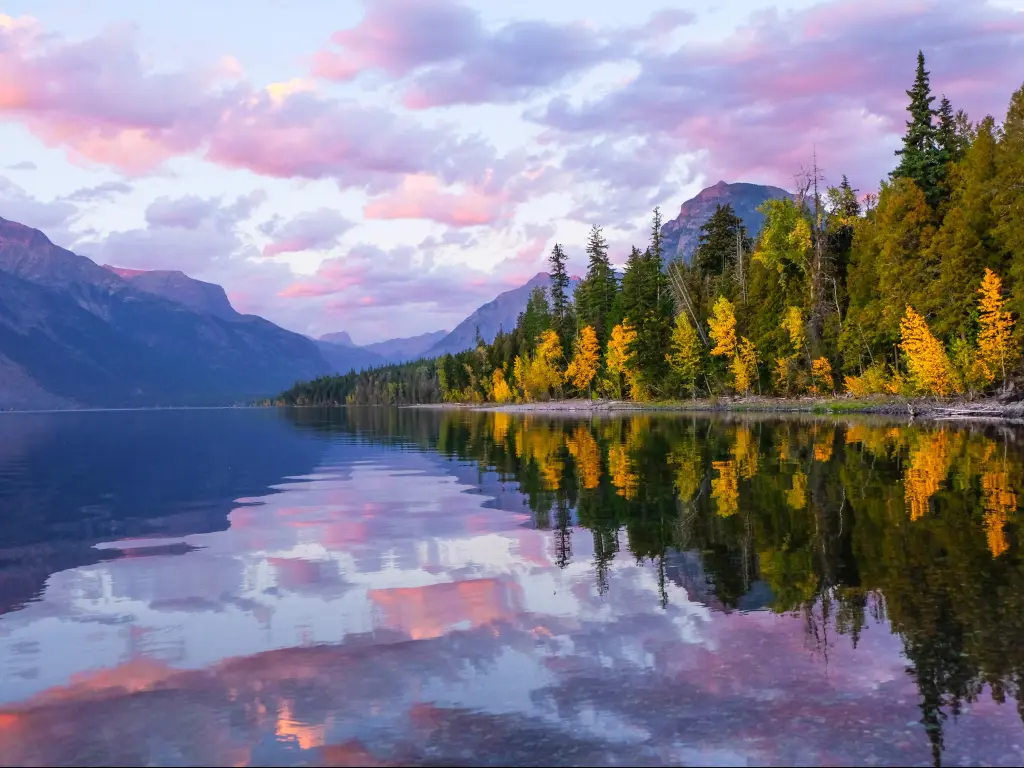
It is important when doing so to check the timetable and make sure there is always a later bus available to continue the journey. The shuttle service usually runs from July to September.
Take a Red Bus Tour and feel the wind in your hair as you visit the most prominent parts of the park. You can get a narrated tour on a vintage open-topped bus, and learn all about the history of the area, spot the local wildlife, and see the best of what the park has to offer.
If you feel like taking to two wheels, then cycling is permitted along sections of the route and will allow you to bask in the glorious wilderness at your own pace.
Hiking part of the route is also an alternative, and Glacier National Park has an extensive trail network allowing you to see much more of the wilderness than driving. Avalanche Lake Trail, Hidden Lake Trail, Highline Trail, and the Grinnell Glacier Trail are a few of the most popular in the area.
Best time to drive on the Going-to-the-Sun Road
The summer months are the most popular time for driving the Going-to-the-Sun Road, with the better weather enhancing the stunning views.
Hiking the outdoor trails, cycling, or swimming in the crisp clear waters of the mountain lakes can all be enjoyed at this time, but it can get busy. If you want to avoid the crowds, driving the route early in the morning, or late afternoon is the best for avoiding the heaviest traffic.
Traveling on weekdays is also quieter than at weekends and helps to avoid larger crowds, making the drive a much more enjoyable experience. In exceptionally busy periods, traffic restrictions may be put in place across the whole area of Glacier National Park, restricting access to allow traffic to clear.
You won't be able to complete the full trip during the winter months as parts of the route are closed due to bad weather with heavy snowfall making driving unsafe. That said, from West Glacier, the road is plowed so it is possible to drive the short stretch up to Lake McDonald.

